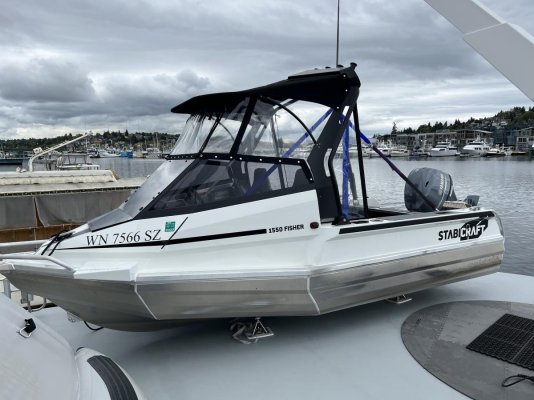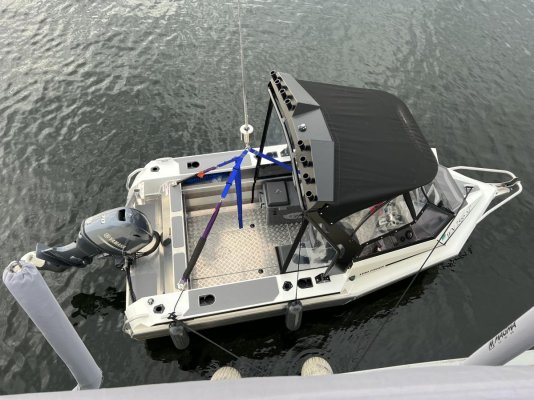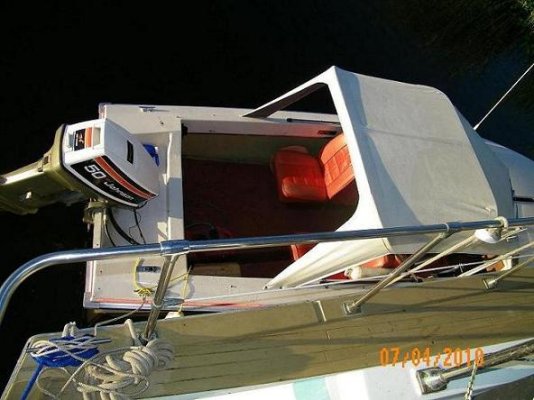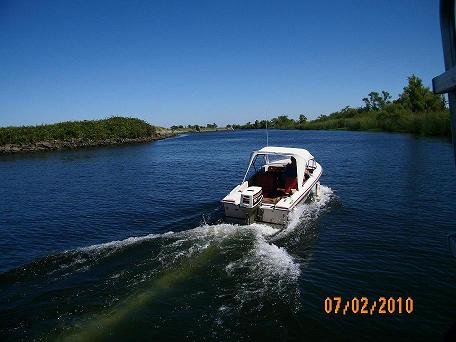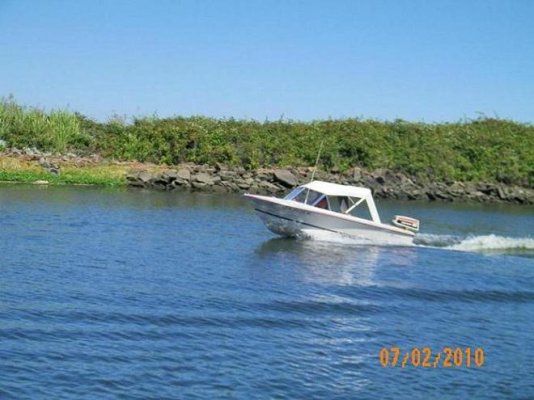Our 1975 version! We tow her all over and then explore all over while "mother ship" sits at anchor.
I plan on towing for shorter hops. What size/type/length of tow rope rope do you use?
Also, how much does your dingy weigh? Thanks.
- Broadside to fuel dock = Side tow against fenders on outer side
- Slowly pulling bow first into our covered slip = 5' length, center justified rear tow line. I have substantial sized fender-rubber permanently fastened on bow-point of runabout [dingy]... so that when it bumps into transom as we stop no damage at all.
- Towing at a bit below hull speed [6.5 to 7 knots] = center justified 15' tow line.
- Towing at full plane [16 to 17 knots] = 30' center justified tow line.
Every small boat tows a bit [maybe even a lot] differently, uniquely. Its hull shape, weight, where its tow hook is located on bow [how high or how low it is] possibly trim tabs and motor placement/positions can dominate its towing stance... at various speeds and different distances off transom. As well, at speeds, the tow boat's wake profile has much to do with length of tow line.
What it comes down to is experiment until the towed boat acts the most effectively/efficiently at the speeds you travel. I recommend o/b in up position.
Guestimate our dink weighs 600 + lbs.... inc. motor and 12 gallons gas. Tow line is 5/8"
Good Luck Towing!!



